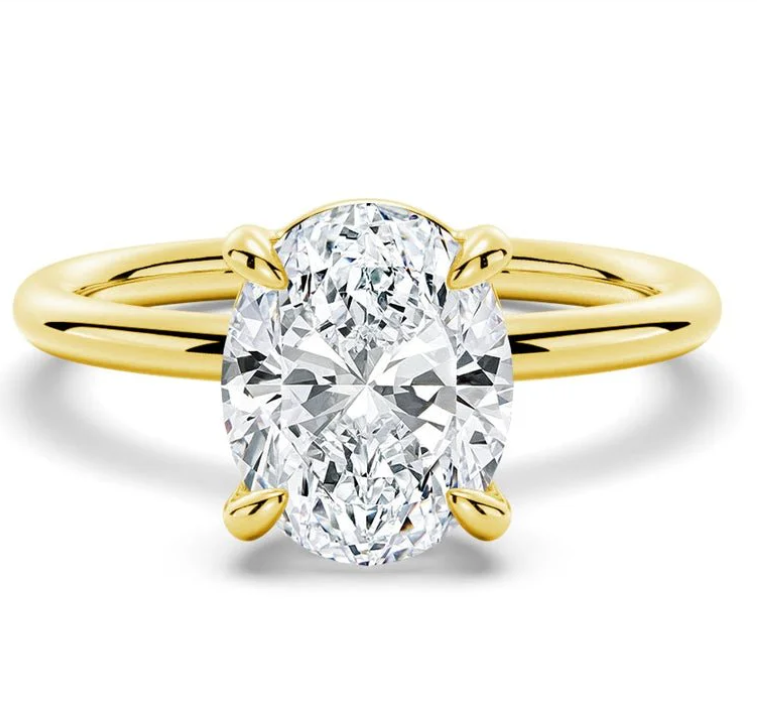Why is Moissanite More Ethical?
Why is Moissanite More Ethical?
Moissanite, a gemstone rapidly gaining popularity in the jewelry industry, is not just a beautiful alternative to traditional diamonds; it's also a beacon of ethical sourcing and sustainability. Here's why moissanite stands out as a more ethical choice:
Conflict-Free Sourcing
Traditional diamond mining has a long history of being associated with conflict and human rights abuses. In contrast, moissanite is created in laboratories, ensuring it is entirely free from the conflicts often tied to diamond mining. By choosing moissanite, consumers can be confident that their purchase isn't contributing to exploitation or suffering in diamond-producing regions.
Environmental Responsibility
Diamond mining has well-documented environmental impacts, including deforestation, soil erosion, and water pollution. Moissanite, being lab-grown, has a significantly lower environmental footprint. The process of creating moissanite requires less energy, water, and produces minimal waste compared to traditional mining methods. This makes moissanite a more environmentally friendly choice for conscientious consumers.
Affordability and Accessibility
Moissanite offers a high-quality, brilliant alternative to traditional diamonds at a fraction of the cost. Its affordability opens up access to luxurious jewelry for a broader range of consumers, including those who may not have considered purchasing diamond jewelry due to budget constraints. This democratization of luxury challenges the notion that diamonds are the only symbol of prestige, making ethical and sustainable jewelry accessible to more people.
Quality and Durability
Moissanite's quality and durability rival that of traditional diamonds. With its brilliance and fire, moissanite reflects and refracts light beautifully, offering a stunning appearance comparable to diamonds. Additionally, moissanite's hardness on the Mohs scale makes it scratch and chip resistant, suitable for everyday wear. Consumers can enjoy the beauty and longevity of moissanite jewelry without compromising on quality or durability.
Technological Advancements
Continued advancements in moissanite production technology offer exciting opportunities for innovation in jewelry design. As techniques for creating moissanite crystals evolve, new possibilities emerge for crafting unique, personalized pieces. The versatility of moissanite, combined with ongoing technological developments, ensures that it remains a dynamic and desirable option in the jewelry industry.
Social Responsibility
Moissanite mining operations prioritize fair labor standards and responsible environmental practices. Unlike traditional diamond mining, which has been plagued by reports of child labor, unsafe working conditions, and environmental degradation, moissanite production upholds ethical standards. By choosing moissanite, consumers support practices that prioritize the well-being of workers and minimize ecological harm.
Community Impact
Traditional diamond mining often has negative impacts on local communities, from displacement of indigenous peoples to economic exploitation. In contrast, moissanite production typically occurs in controlled laboratory environments, minimizing disruption to communities and ensuring fair treatment of workers. By opting for moissanite, consumers can contribute to sustainable development and support communities without the adverse effects associated with traditional mining.
Transparency and Traceability
Moissanite's lab-grown nature allows for greater transparency and traceability throughout the supply chain. Consumers can easily verify the origins of their moissanite jewelry, ensuring it meets ethical and environmental standards. This transparency fosters trust between consumers and producers, empowering individuals to make informed choices about their purchases and support ethical practices in the jewelry industry.
Long-Term Sustainability
As concerns about environmental conservation and ethical sourcing continue to grow, moissanite emerges as a sustainable option for the future of the jewelry industry. Its lab-grown production process can be scaled to meet demand without depleting natural resources or causing harm to ecosystems. By embracing moissanite, consumers can contribute to a more sustainable and responsible jewelry market that prioritizes both people and the planet.
In conclusion, moissanite's ethical sourcing, environmental sustainability, affordability, and quality make it a compelling choice for conscious consumers. As awareness grows about the impact of traditional diamond mining, moissanite emerges as a shining example of how jewelry can be both beautiful and ethical. By embracing moissanite, consumers can adorn themselves with jewelry that reflects not only style and elegance but also values of social and environmental responsibility.





















